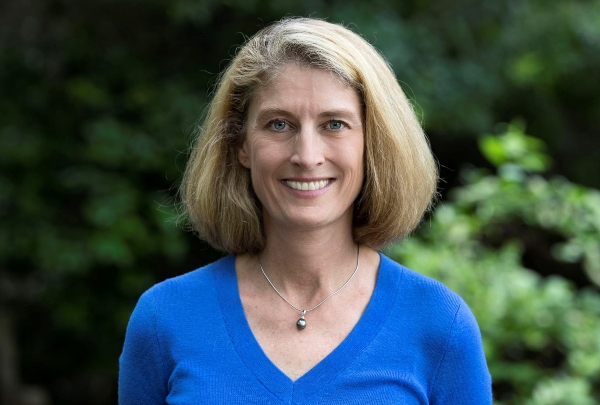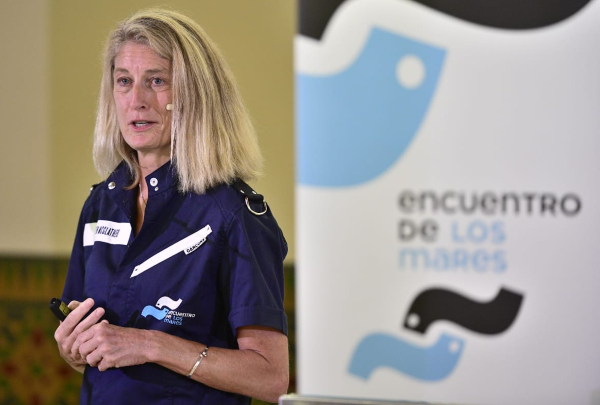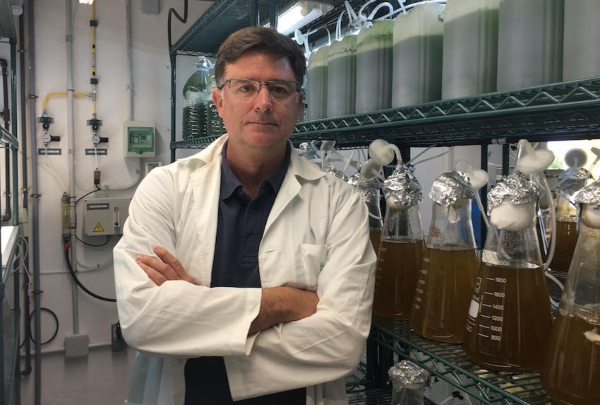Interview
Karen McGlathery: “Seagrass meadows will help reverse climate change”

Karen McGlathery is an international authority on seagrass meadows and their recovery.
A successful repopulation of seagrass meadows in Virginia, on the United States’ eastern seaboard, was carried out thanks to her and her team. We talked to her to find out why retrieving these maritime habitats is decisive for our future.
Brought up next to the coast as the granddaughter of an English sailor who took her out to sea whenever he could, it is hardly surprising that the young Karen McGlathery developed a special relationship with the sea. So special, in fact, that it directed her professional trajectory towards those very waters; although Karen was never keen on deep waters, or venturing farther out to sea, - “the coast is my territory – I can see the sea bed, and walk on it”-. It was for this reason that when she graduated in ecology, she directed her studies and research towards seagrass meadows. Now McGlathery and her team at the University of Virginia (United States) are ranked as leading experts in the restoration of these incredible ecosystems thanks to their extensive project to repopulate the coasts of this US state.
A project which not only seeks to re-establish territories damaged by human activity, but also to turn them into key spaces for our future and the future of our planet.
Why are seagrass meadows so important? Why is it so worthwhile investing in restoring seagrass?
Seagrass meadows are critically important coastal habitats that support our economies, health and well-being. Some of the benefits we get from seagrass meadows include mitigating climate change, improving water quality, providing habitat for fish and shellfish, increasing biodiversity, and preventing coastal erosion. Unfortunately, over the last century nearly 20% of seagrass meadows have been lost or degraded by human activities. Yet this also provides an opportunity to reverse the trend and restore seagrasses and the benefits they provide us with.
Seagrass meadows are disappearing all over the world. Of the 72 species, 15 must be considered endangered, vulnerable, or near-threatened, according to the criteria of the International Union for the Conservation of Nature’s red list. What is affecting these ecosystems?
Land-use change and its effects on water quality, coastal development and dredging have long impacted seagrass meadows and other coastal habitats. We are now seeing the effects of accelerating climate change. This is especially true in the case of marine heatwaves and more frequent storms.
The fact that these are underwater enclaves, invisible to most people, means we are not so aware of their gradual deterioration and disappearance, but their effects are certainly obvious. What does it mean when there is no seagrass in a certain area?
When seagrass meadows are lost, all the benefits we enjoy from them are also lost. Biodiversity decreases and many commercially important fish and shellfish species are lost, water quality decreases, and the area is no longer as effective in removing carbon dioxide from the atmosphere to mitigate climate change or in buffering coastlines from eroding waves.
And what are we doing to prevent the disappearance of such vital marine ecosystems?
There are different approaches to restoring seagrass meadows. These include sowing seeds like we have done in Virginia and transplanting individual plants from donor meadows. The advantage of using seeds is that you can restore a larger area. In the Virginia coastal bays over 70 million seeds have been collected and then broadcast in just over 200 hectares. Now there are over 36 square kilometres of thriving seagrass meadows – one of the most successful marine restoration efforts anywhere in the world.
In addition to the natural richness of seagrass meadows, they are also an essential ally to fight climate change. What is the link between seagrass meadows and climatic stability?
Seagrass meadows use the power of photosynthesis – the most fundamental process of life – to take carbon dioxide out of the atmosphere and turn it into plant material, and ultimately bury that carbon in sediments for decades to centuries, and even millennia. So seagrasses are one of our nature-based solutions on land and sea that will help reverse climate change and reset the global carbon cycle. This “blue carbon” in the oceans is now being recognised as a globally important carbon sink.
Your project to restore the local population of seagrass meadows on the Virginia coast is a success. Where does the success lie?
This restoration project has triggered large increases in fishes and invertebrates, made the water clearer and trapped large quantities of carbon in seafloor sediments, helping to slow climate change. It also is the basis for government legislation to issue carbon-offset credits for seagrass restoration. One of the reasons this restoration is so successful is that the area has been managed for conservation for over 50 years, and so there is minimal impact from people.
But globally we need to manage wisely to protect existing coastal ecosystems and foster recovery. The greatest losses of seagrass meadows have been in the tropical Atlantic and Indo-Pacific, and the temperature of the north-eastern Atlantic and southern Oceans. We are doing a better job managing coastal development and water quality that can threaten seagrass. But the biggest issue for our coastal oceans now is the vulnerability of seagrass meadows and other habitats to climate change, particularly rising ocean temperatures, increasing storms, and acidification.
Even on a small scale, how can each one of us help to reverse this situation?
Every little bit certainly helps. Many restoration projects involve citizens in collecting seeds, planting individual plants, or monitoring the success of restoration. Raising awareness is important, especially locally, to avoid disturbance of meadows and promote restoration projects.
Ultimately, though, it comes down to climate action to ensure these meadows will be here for our grandchildren and their children. Climate change is the biggest threat to the long-term survival of seagrass meadows and other coastal habitats that sustain us, and reversing the trend of climate change will reverse the trend of seagrass loss.


 600x405 (1).jpg)
.jpg)













